
Deutsch-Chinesische Enzyklopädie, 德汉百科

 Algeria
Algeria
 Angola
Angola
 Ecuador
Ecuador

 Energy resource
Energy resource

 Financial
Financial
 *Brazil economic data
*Brazil economic data

 Financial
Financial
 *China economic data
*China economic data

 Financial
Financial
 *Germany economic data
*Germany economic data

 Financial
Financial
 *European Union economic data
*European Union economic data

 Financial
Financial
 *France economic data
*France economic data

 Financial
Financial
 *India economic data
*India economic data

 Financial
Financial
 *Indonesia economic data
*Indonesia economic data

 Financial
Financial
 *Italy economic data
*Italy economic data

 Financial
Financial
 *Japan economic data
*Japan economic data

 Financial
Financial
 *Canada economic data
*Canada economic data

 Financial
Financial
 *Russia economic data
*Russia economic data

 Financial
Financial
 *United States economic data
*United States economic data

 Financial
Financial
 *United Kingdom economic data
*United Kingdom economic data

 Geography
Geography
 *World overview
*World overview

 Hand in Hand
Hand in Hand
 Iraq
Iraq
 Iran
Iran
 Kuwait
Kuwait
 Libya
Libya
 Nigeria
Nigeria
 OPEC
OPEC
 Republik Kongo
Republik Kongo
 Saudi Arabia
Saudi Arabia
 Venezuela
Venezuela
 United Arab Emirates
United Arab Emirates

 Important International Organizations
Important International Organizations

石油输出国组织(英语:Organization of the Petroleum Exporting Countries,OPEC,发音为/ˈoʊpɛk/ OH-pek;简称欧佩克、油盟或油组)是由伊朗、伊拉克、科威特、沙特阿拉伯和委内瑞拉五国为共同应对由英美主导的七姊妹跨国石油公司,并且维护石油这一稳定收入,而于1960年在巴格达成立的一个政府间组织。总部自1965年以来设于奥地利维也纳,截至2018年2月拥有14个成员国。2016年,14个国家估计占全球石油产量的44%,占全球探明石油储量的73%。这使得欧佩克可以对全球原油价格产生重大影响。
石油输出国组织的既定使命是“协调统一成员国的石油政策与价格、确保石油市场的稳定,以确保为石油消费国有效、经济而稳定的石油供应,为产油国提供适度的尊重和稳定的收入,为投资于石油行业的资本提供公平的回报。”[2]该组织也是国际石油市场信息的重要提供者。截至2017年5月,石油输出国组织(欧佩克)的成员除了前加入的五个外还包括阿尔及利亚(1969年加入)、阿拉伯联合酋长国(1967年加入)、安哥拉(2007年加入)、厄瓜多尔(1973年加入,1992年退出,2007年再加入)、赤道几内亚(2017年加入)、加蓬(1975年加入,1995年初退出,2016年再加入)、利比亚(1962年加入)、尼日利亚(1971年加入)、卡塔尔(1961年加入,2019年1月退出)、刚果共和国(2018年加入),而印尼则是其前成员(1962年加入,2008年底退出,2016年1月重新加入,同年12月再度退出)。沙特阿拉伯是该组织事实上的(英语:De facto)领导者。三分之二的石油输出国组织的石油产储量位于围绕富油波斯湾的六个中东国家。
Die Organisation erdölexportierender Länder (kurz OPEC, von englisch Organization of the Petroleum Exporting Countries) ist eine 1960 gegründete internationale Organisation mit Sitz in Wien. Derzeit gehören dem Kartell fünfzehn Staaten an: Algerien, Angola, Ecuador, Äquatorialguinea, Gabun, Iran, Irak, die Republik Kongo, Kuwait, Libyen, Nigeria, Katar, Saudi-Arabien, die Vereinigten Arabischen Emirate und Venezuela.[1] Indonesien ist Ende 2016 ausgetreten.
Fünf OPEC-Mitglieder (Saudi-Arabien, Iran, Kuwait, Venezuela, Vereinigte Arabischen Emirate) gehören zu den zehn größten Erdölförderern der Welt. Insgesamt fördern die OPEC-Mitgliedstaaten ungefähr 40 Prozent der weltweiten Erdölproduktion und verfügen über drei Viertel der weltweiten Erdölreserven. Nachdem einige Nicht-OPEC-Staaten ihr Ölfördermaximum überschritten haben, wird erwartet, dass der Einfluss der OPEC steigt. Andererseits stellen manche Experten (z. B. Matthew Simmons) die Angaben zu den Reserven in Frage, etwa die Saudi-Arabiens.
石油輸出国機構(せきゆゆしゅつこくきこう、英: Organization of the Petroleum Exporting Countries、略称:OPEC(日本語発音:オペックopec 、アメリカ英語発音:[ˈoʊpek] オウペク))は、国際石油資本などから石油産出国の利益を守ることを目的として、1960年9月14日に設立された組織である。設立当初は、イラン、イラク、クウェート、サウジアラビア、ベネズエラの5ヶ国を加盟国としていたものの、後に加盟国は増加し、2018年7月現在では15ヶ国が加盟している。世界最大のカルテルとされ、1970年代には石油の価格決定権を国際石油資本より奪い、2度のオイルショックを引き起こしたが、1986年からは石油価格の決定権は自由市場へと移ったこともあり、現在では価格統制力はそれほど強いものではない。なお、オーストリアは加盟国ではないものの、石油輸出国機構の本部は首都ウィーンに設置されている。
The Organization of the Petroleum Exporting Countries (OPEC, /ˈoʊpɛk/ OH-pek) is an intergovernmental organisation of 14 nations, founded in 1960 in Baghdad by the first five members (Iran, Iraq, Kuwait, Saudi Arabia, and Venezuela), and headquartered since 1965 in Vienna, Austria. As of September 2018, the then 15 member countries accounted for an estimated 44 percent of global oil production and 81.5 percent of the world's "proven" oil reserves, giving OPEC a major influence on global oil prices that were previously determined by the so called "Seven Sisters” grouping of multinational oil companies.
The stated mission of the organisation is to "coordinate and unify the petroleum policies of its member countries and ensure the stabilization of oil markets, in order to secure an efficient, economic and regular supply of petroleum to consumers, a steady income to producers, and a fair return on capital for those investing in the petroleum industry."[4] The organization is also a significant provider of information about the international oil market. The current OPEC members are the following: Algeria, Angola, Ecuador, Equatorial Guinea, Gabon, Iran, Iraq, Kuwait, Libya, Nigeria, the Republic of the Congo, Saudi Arabia (the de facto leader), United Arab Emirates, and Venezuela. Indonesia and Qatar are former members.
The formation of OPEC marked a turning point toward national sovereignty over natural resources, and OPEC decisions have come to play a prominent role in the global oil market and international relations. The effect can be particularly strong when wars or civil disorders lead to extended interruptions in supply. In the 1970s, restrictions in oil production led to a dramatic rise in oil prices and in the revenue and wealth of OPEC, with long-lasting and far-reaching consequences for the global economy. In the 1980s, OPEC began setting production targets for its member nations; generally, when the targets are reduced, oil prices increase. This has occurred most recently from the organization's 2008 and 2016 decisions to trim oversupply.
Economists often cite OPEC as a textbook example of a cartel that cooperates to reduce market competition, but one whose consultations are protected by the doctrine of state immunity under international law. In December 2014, "OPEC and the oil men" ranked as #3 on Lloyd's list of "the top 100 most influential people in the shipping industry".[5] However, the influence of OPEC on international trade is periodically challenged by the expansion of non-OPEC energy sources, and by the recurring temptation for individual OPEC countries to exceed production targets and pursue conflicting self-interests.
L'Organisation des pays exportateurs de pétrole (OPEP) (en anglais Organization of Petroleum Exporting Countries (OPEC)), est une organisation intergouvernementale (un cartel) de pays visant à négocier avec les sociétés pétrolières pour tout ce qui touche à la production de pétrole, son prix et les futurs droits de concession1. Depuis le 1er août 2016, le secrétaire général de l'OPEP est l'ancien patron de la compagnie nationale des hydrocarbures du Nigeria (NNPC) Mohammed Barkindo2.
L'Organizzazione dei Paesi esportatori di petrolio, meglio conosciuta come OPEC (Organization of the Petroleum Exporting Countries), fondata nel 1960, comprende dodici Paesi che si sono associati, formando un cartello economico, per negoziare con le compagnie petrolifere aspetti relativi alla produzione di petrolio, prezzi e concessioni. La sede dell'OPEC, dapprima stabilita a Ginevra, a partire dal 1º settembre 1965 è stata trasferita a Vienna.
Gli stati membri OPEC controllano circa il 78% delle riserve mondiali accertate di petrolio, il 50% di quelle di gas naturale e forniscono circa il 42% della produzione mondiale di petrolio ed il 17% di quella di gas naturale.[1] L'organizzazione parallela dell'OAPEC (Organizzazione dei Paesi Arabi Esportatori di Petrolio), fondata nel 1968 nel Kuwait, si occupa del coordinamento delle politiche energetiche dei paesi Arabi che fanno parte dell'OPEC.
La Organización de Países Exportadores de Petróleo (OPEP) es un organismo internacional fundado en Bagdad, Irak, en 1960. Actualmente lo conforman 15 países, de los cuales 5 son miembros fundadores (Arabia Saudita, Kuwait, Irán, Irak y Venezuela). Desde 1965 tiene sede en Viena, Austria. Constituido a iniciativa del Gobierno de Venezuela, presidido por Rómulo Betancourt, y el entonces presidente de Irak, Muhammad Najib ar-Ruba'i, en respuesta a la concentración de poder político y económico de los Estados Unidos como principal productor y consumidor de petróleo del mundo en el período de posguerra.
La OPEP "puede tener una gran influencia en el mercado de petróleo, especialmente si decide reducir o aumentar su nivel de producción".1 El 43% de la producción mundial de petróleo y el 81% de las reservas mundiales de petróleo se encuentran en países miembros de la OPEP.2 Su dominio en las exportaciones de crudo, para el tercer trimestre del año 2016, se sitúa en alrededor del 34,9%.3 Además, concentra la totalidad de la capacidad necesaria de producción de petróleo del mundo, lo que, de facto, convierte a la Organización de países exportadores de petróleo en el banco central del mercado petrolero.
La cuota de mercado de la organización aumentará en el futuro, ya que la Agencia Internacional de la Energía prevé que la producción de petróleo convencional de los países que no forman parte de la OPEP alcanzará su máximo alrededor de 2015.
La OPEP es una organización reconocida desde el 6 de noviembre de 1962 por la Organización de las Naciones Unidas (ONU), gracias a la resolución número 6.363.[cita requerida] La OPEP tuvo su sede en Ginebra (Suiza) entre 1960 y 1965, y después trasladó su sede a Viena, gracias a las facilidades que otorgó el gobierno austríaco.
Los estatutos de la OPEP establecen que su objetivo es coordinar y unificar las políticas petroleras entre los países miembros, con el fin de garantizar unos precios justos y estables para los productores de petróleo, el abastecimiento eficiente, económico y regular de petróleo a los países consumidores y un rendimiento justo del capital de los inversores.
Los países miembros lograron un significativo aumento del precio del petróleo, sobre todo en los años 1973, 1974 y 1979, y una mayor participación y control sobre la explotación realizada en sus territorios.
La OPEP vivió su primera ampliación en 30 años en enero de 2007 cuando Angola se convirtió de forma oficial en el duodécimo socio del grupo, tras pedir su ingreso en la reunión de la OPEP en Abuya (Nigeria) de diciembre de 2006 y haber sondeado al grupo en la reunión de Caracas (Venezuela) de ese mismo año.
A comienzos del año 2007 el gobierno de Ecuador anunció la posibilidad de regresar a la organización,4 hecho que se materializó finalmente en noviembre de ese mismo año.
Posteriormente, Indonesia suspendió su membresía nuevamente en 2016,5 luego de dos años de haber reingresado a la organización, tras su salida en 2008.
Recientemente, Gabón reingresó a la organización en el año 2016, luego de haber suspendido su membresía en el año 1995; mientras que Guinea Ecuatorial se unió por primera vez a la organización en mayo de 2017.6
Catar, uno de los productores de crudo más pequeños dentro de la Organización, ha anunciado su retiro del organismo para enero de 2019. Así lo dio a conocer su ministro de energía, Saad Sherida al-Kaabi, durante una rueda de prensa el lunes 3 de diciembre de 2018.7
Otros países productores de petróleo, aunque no son integrantes de la OPEP, como Sudán, México, Noruega, Rusia, Kazajistán, Omán y Egipto, participan regularmente como observadores en las reuniones ordinarias del grupo.
Организа́ция стран — экспортёров не́фти (англ. The Organization of the Petroleum Exporting Countries; сокращённо ОПЕ́К, англ. OPEC) — международная межправительственная организация, созданная нефтедобывающими странами в целях контроля квот добычи на нефть. Часто рассматривается как картель. В состав ОПЕК входят 15 стран[4]: Алжир, Ангола, Венесуэла, Габон, Иран, Ирак, Конго, Кувейт, Катар (с января 2019 выходит из альянса), Ливия, Объединённые Арабские Эмираты, Нигерия, Саудовская Аравия, Экваториальная Гвинея и Эквадор. Штаб-квартира расположена в Вене. Генеральный секретарь (с 01 августа 2016 г.) — Мохаммед Баркиндо.[5]
Страны члены ОПЕК контролируют около 2/3 мировых запасов нефти. На их долю приходится ~35 % от всемирной добычи или половина мирового экспорта нефти. Доказанные запасы нефти стран, входящих в ОПЕК, в настоящее время составляют 1199,71 миллиарда баррелей.
 Armenia
Armenia
 Benin
Benin
 Burkina Faso
Burkina Faso
 Demokratische Republik Kongo
Demokratische Republik Kongo
 France
France

 Ile-de-France
Ile-de-France
 Canada
Canada
 Libanon
Libanon
 Madagaskar
Madagaskar
 Mauritius
Mauritius

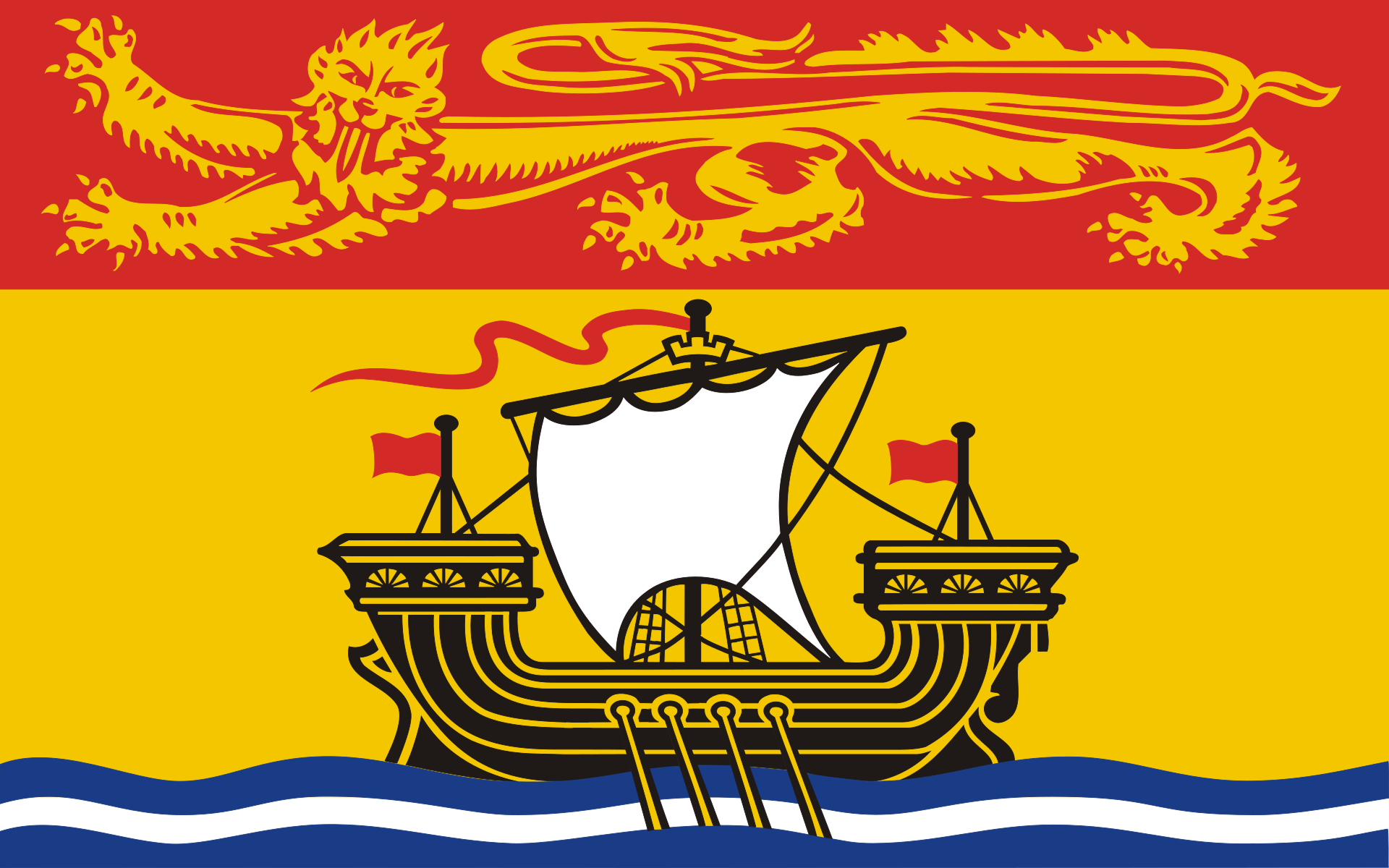 New Brunswick-NB
New Brunswick-NB

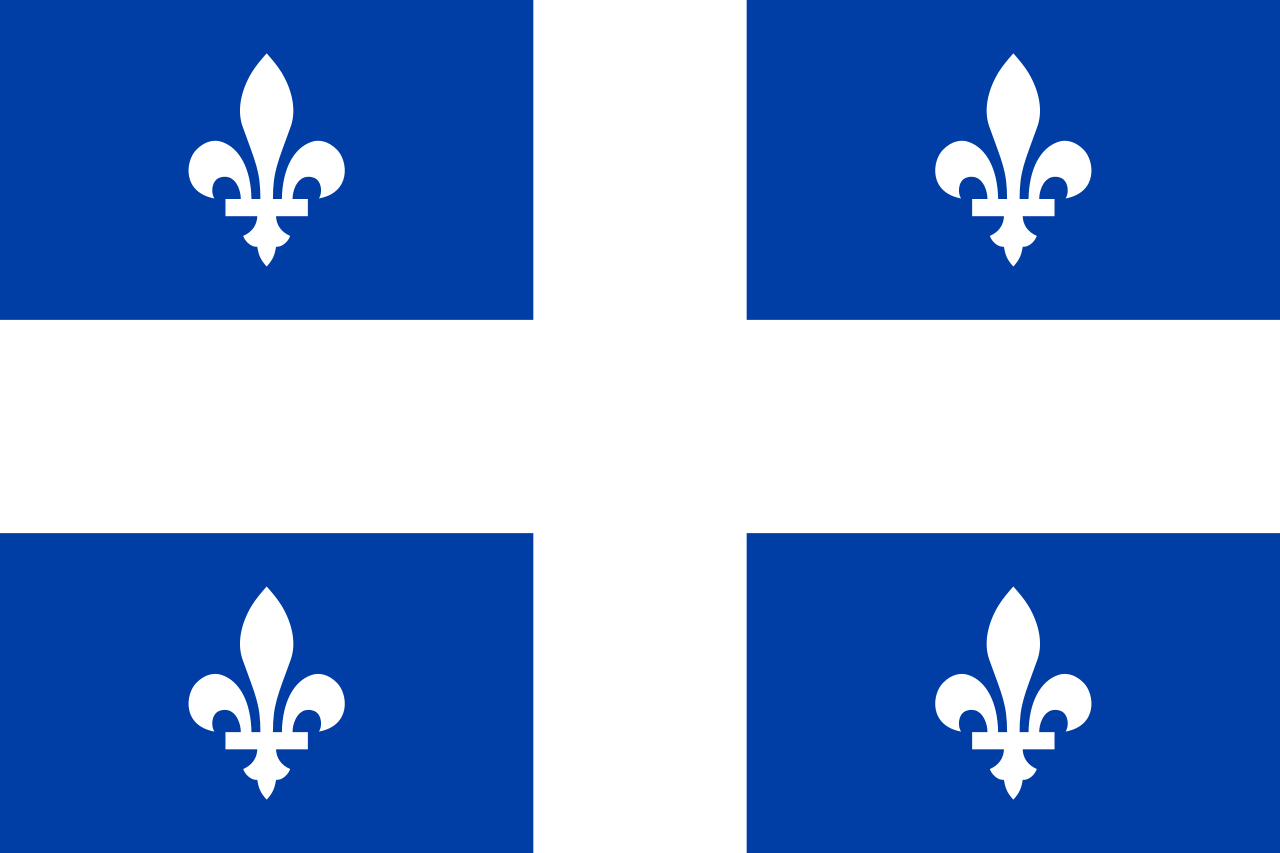 Quebec-QC
Quebec-QC
 Romania
Romania
 Switzerland
Switzerland
 Senegal
Senegal
 Tunisia
Tunisia
 Vietnam
Vietnam

 Important International Organizations
Important International Organizations
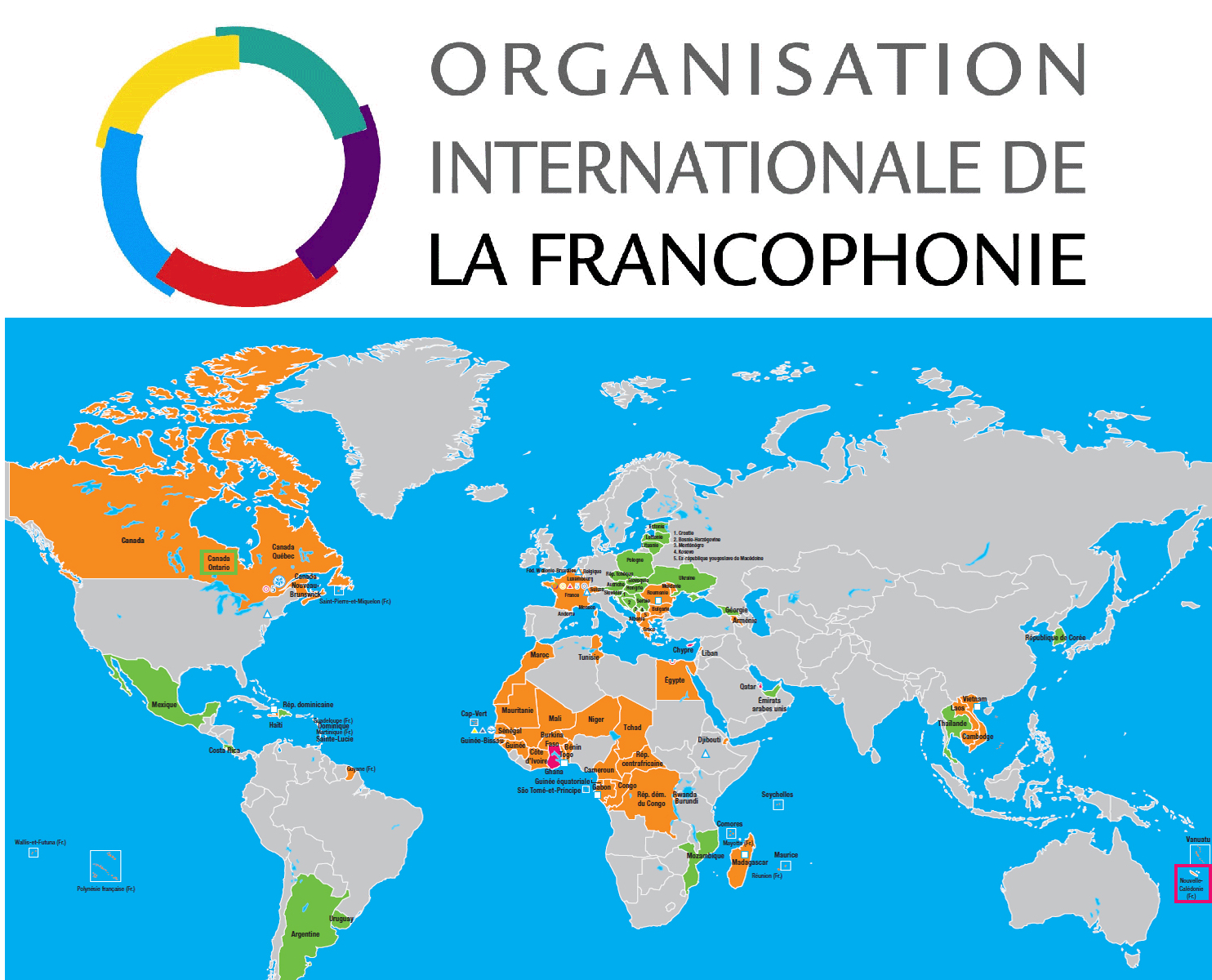
法语国家国际组织(OIF,有时简称 "法语国家组织",法语: 法语国家国际组织是一个国际组织,代表以法语为通用语言或习惯用语、法语使用者(讲法语者)占人口很大比例或与法国文化有显著联系的国家和地区。
该组织由 88 个成员国和政府组成;其中 54 个国家和政府为正式成员,7 个为准成员,27 个为观察员。法语国家(francophonie,小写 "f")或法语圈(francosphere,英语中通常大写)也指全球法语国家人民的共同体,[5] 由私人和公共组织网络组成,旨在促进法语或比利时人民或法国或比利时在文化、军事或政治上发挥过重要历史作用的国家之间的平等联系。
这个现代组织成立于 1970 年。该组织的座右铭是 "平等、互补、团结"(égalité, complémentarité, solidarité),意在暗指法国的座右铭 "自由、平等、博爱"(liberté, égalité, fraternité)。法语国家组织最初只是一个法语国家的小团体,后来发展成为一个全球性组织,其众多分支机构与成员国在文化、科学、经济、正义与和平领域开展合作。
Die Organisation internationale de la Francophonie (OIF; manchmal abgekürzt als Francophonie, franz: La Francophonie [la fʁɑ̃kɔfɔni], im Englischen manchmal auch International Organisation of La Francophonie genannt) ist eine internationale Organisation, die Länder und Regionen vertritt, in denen Französisch Lingua franca oder Verkehrssprache ist, in denen ein bedeutender Anteil der Bevölkerung frankophon (französischsprachig) ist oder in denen es eine bemerkenswerte Zugehörigkeit zur französischen Kultur gibt.
Der Organisation gehören 88 Staaten und Regierungen an; davon sind 54 Staaten und Regierungen Vollmitglieder, 7 sind assoziierte Mitglieder und 27 haben Beobachterstatus. Der Begriff Frankophonie (mit kleinem "f") oder Frankosphäre (im Englischen oft großgeschrieben) bezieht sich auch auf die globale Gemeinschaft französischsprachiger Völker,[5] die ein Netzwerk privater und öffentlicher Organisationen umfasst, die gleichberechtigte Beziehungen zwischen Ländern fördern, in denen Franzosen oder Belgier leben oder Frankreich oder Belgien eine bedeutende historische Rolle in kultureller, militärischer oder politischer Hinsicht gespielt haben.
Die heutige Organisation wurde 1970 gegründet. Ihr Motto lautet égalité, complémentarité, solidarité ("Gleichheit, Komplementarität und Solidarität"), eine bewusste Anspielung auf Frankreichs Motto liberté, égalité, fraternité. Aus einer kleinen Gruppe französischsprachiger Länder hat sich die Frankophonie zu einer weltweiten Organisation entwickelt, deren zahlreiche Zweigstellen mit ihren Mitgliedstaaten in den Bereichen Kultur, Wissenschaft, Wirtschaft, Justiz und Frieden zusammenarbeiten.
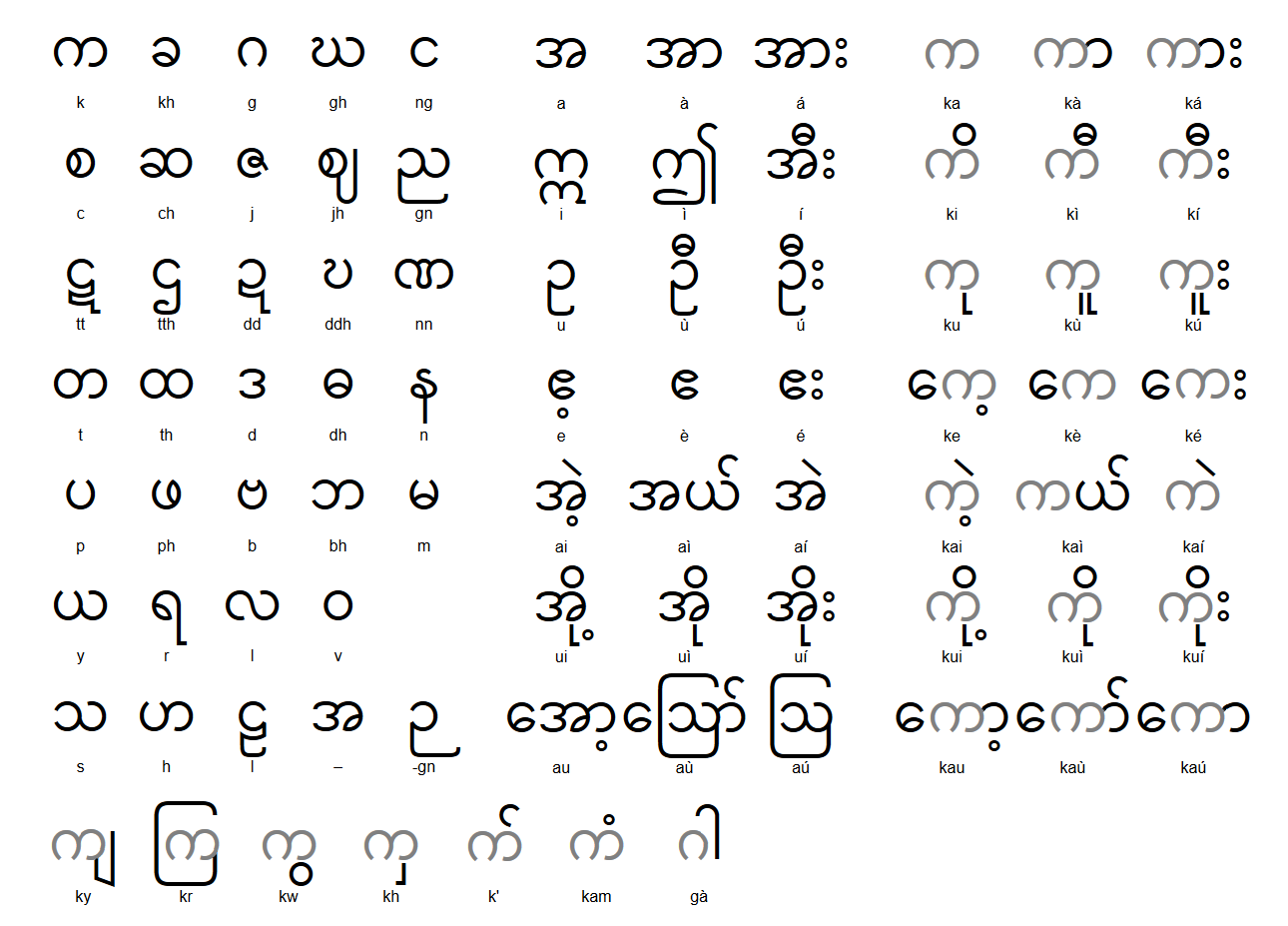
巴利语(IAST/ISO 15919: Pāḷi、पालि)是古印度语言,属于印欧语系、印度-伊朗语族、印度-雅利安语支的中古印度-雅利安语,与梵语十分相近,是印度俗语普拉克里特诸语言之一。巴利语可以用各种文字书写,比如婆罗米文、天城文,以及由巴利圣典协会的英国语言学家理斯·戴维斯所采用的适用于各种印度语言的拉丁字母转写。
Pali (පාලි pāli, deutsch ‚der Text‘ „die Zeile“) ist eine mittelindoarische Sprache. Ob Pali jemals eine gesprochene Sprache war, ist umstritten. Heute wird es eher als Literatursprache eingestuft. Pali gehört zu den Prakrit-Sprachen. Heutzutage wird Pali als Sakralsprache im südostasiatischen Buddhismus verwendet.
 Columbia
Columbia
 Costa Rica
Costa Rica
 Côte d´Ivoire
Côte d´Ivoire
 Ecuador
Ecuador

 Eat and Drink
Eat and Drink
 *Palm oil
*Palm oil
 Honduras
Honduras
 Indonesia
Indonesia

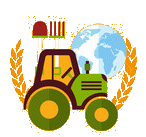 Agriculture, forestry, livestock, fishing
Agriculture, forestry, livestock, fishing
 Malaysia
Malaysia
 Nigeria
Nigeria
 Papua-Neuguinea
Papua-Neuguinea
 Thailand
Thailand
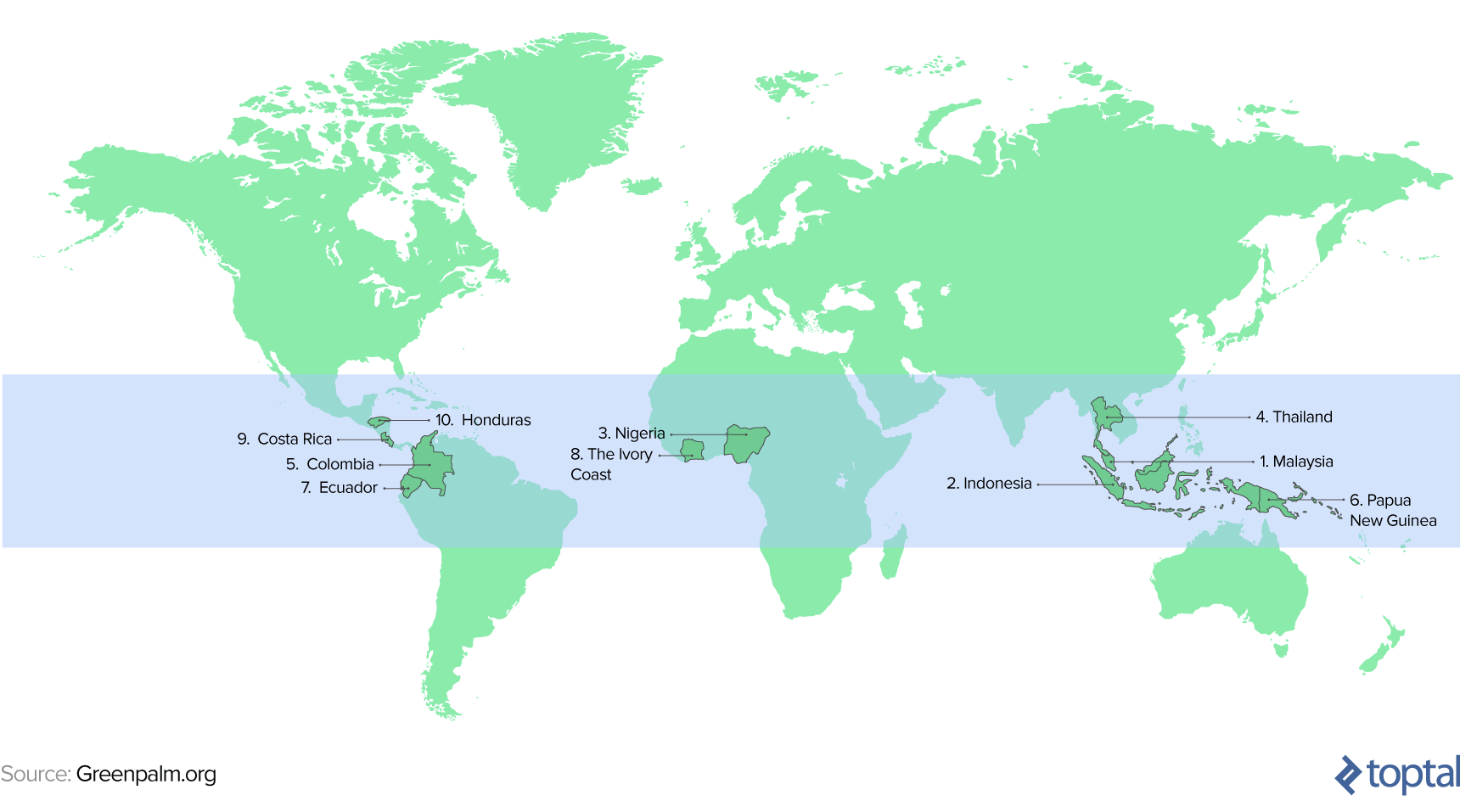


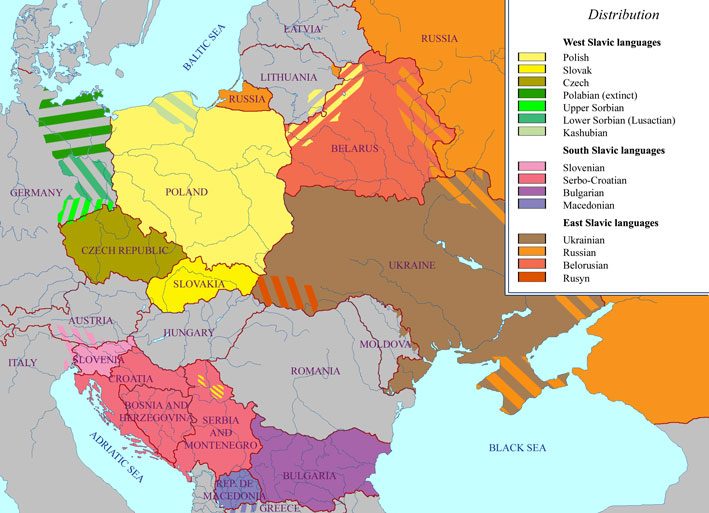
波兰语(język polski)是波兰的官方语言。也是西斯拉夫语支中使用人数最多的语种。 波兰语在与外来语言的接触中受到了深刻的影响,如早期的拉丁语、捷克语、法语、德语、意大利语、古白俄罗斯语、俄语。而近年来,它受到英语的强烈冲击(影响),尤其是美国英语。在上西里西亚地区,波兰语的"霸主"地位受到了德语的影响。从1945年起,由于教育和人口迁移(在第二次世界大战之后,这一段时间影响了不少国家,但在波兰是一个极端的例子),虽然有的地区仍然坚持使用标准的波兰语,但这不足以掩盖波兰语已被逐渐被同化的事实。在东部和北部,不断有从并入苏联的波兰领土上的波兰人迁入,这些移民中年龄较大的人往往带有东部地区的口音。 波兰语和列克希第语(卡舒比语、波拉宾语)、上索布语和下索布语、捷克语和斯洛伐克语,都属于斯拉夫语族的西斯拉夫语支。
波兰语是波兰的主要语言。事实上,波兰是讲官方语言人数比例最高的欧洲国家,有接近98%的波兰人使用他们的母语——波兰语。二战后,部分并入苏联的波兰领土上仍有大量波兰人居住,他们不愿意向战后的祖国迁移。到现在,波兰人在立陶宛、白俄罗斯和乌克兰已成为了一个数目很大的少数民族。在立陶宛,9%的人口把波兰语作为他们的母语。讲波兰语的人数占维尔纽斯(立陶宛共和国首都)总人口的31.2%。大量人口讲波兰语的情况也存在于立陶宛的其他地区。自2004起,维尔纽斯政府规定唯一的官方语言是立陶宛语。在乌克兰境内,常使用波兰语的地区是利沃夫州西部和沃伦州。白俄罗斯西部有讲波兰语的民族是一个重要的组成部分,特别是在布列斯特和格罗德诺地区。
还有一些的讲波兰语的人口分布在澳大利亚、奥地利、阿塞拜疆、巴西、加拿大、捷克、爱沙尼亚、芬兰、德国、希腊、匈牙利、以色列、哈萨克斯坦、拉脱维亚、新西兰、罗马尼亚、俄罗斯、斯洛伐克、阿联酋、英国和美国。在美国讲波兰语的人口超过100万。
Die polnische Sprache (im Polnischen język polski, polska mowa oder polszczyzna) ist eine westslawische Sprache aus dem slawischen Zweig der indogermanischen Sprachen. Zu ihren engsten Verwandten zählen das Kaschubische und die sorbischen Sprachen, große Ähnlichkeiten bestehen auch zum Tschechischen und Slowakischen.
Neben ihrem Status als Amtssprache Polens gehört sie seit dem Jahr 2004 zu den 24 Amtssprachen der Europäischen Union. Polnisch ist mit etwa 48 bis 55 Millionen Sprechern nach dem Russischen und vor dem Ukrainischen die slawische Sprache mit der zweitgrößten Sprecherzahl.
Polnisch wird mit dem lateinischen Alphabet geschrieben, ergänzt um die Buchstaben Ą, Ć, Ę, Ł, Ń, Ó, Ś, Ź und Ż. Mit der Pflege der polnischen Sprache ist der Polnische Sprachrat beauftragt. Die Wissenschaft, die sich mit der polnischen Sprache, Literatur und Kultur befasst, heißt Polonistik.
ポーランド語(ポーランドご、波: język polski(イェンズィク・ポルスキ)、polski、または polszczyzna(ポルシュチズナ))は、インド・ヨーロッパ語族スラヴ語派の西スラヴ語群レヒト諸語に属するポーランドの公用語。レヒト諸語と同じ西スラヴ語群に属する言語は、チェコ・スロヴァキア諸語とソルブ諸語である。名詞の格変化は7格(主格、生格、与格、対格、造格、前置格、呼格)あり、文中での語の働きが格語尾によって示されることなど、形態による表現の豊かさを特徴とする。
ポーランド語は16世紀の期間に発達し、新単語は19世紀に口語のドイツ語、ラテン語、ロシア語、英語から採られポーランド語のスペルに反映されている[1]。ラテン文字は12世紀に導入され、話し言葉だけのポーランド語を記載できるようになった[2]。
Polish (język polski, [ˈjɛ̃zɨk ˈpɔlskʲi] (![]() listen), polszczyzna, [pɔlˈʂt͡ʂɨzna] (
listen), polszczyzna, [pɔlˈʂt͡ʂɨzna] (![]() listen) or simply polski, [ˈpɔlskʲi] (
listen) or simply polski, [ˈpɔlskʲi] (![]() listen)) is a West Slavic language of the Lechitic group.[8] It is spoken primarily in Poland and serves as the native language of the Poles. In addition to being an official language of Poland, it is also used by Polish minorities in other countries. There are over 50 million[2][1] Polish-language speakers around the world and it is one of the official languages of the European Union.
listen)) is a West Slavic language of the Lechitic group.[8] It is spoken primarily in Poland and serves as the native language of the Poles. In addition to being an official language of Poland, it is also used by Polish minorities in other countries. There are over 50 million[2][1] Polish-language speakers around the world and it is one of the official languages of the European Union.
Polish is written with the standardized Polish alphabet, which has nine additions to the letters of the basic Latin script (ą, ć, ę, ł, ń, ó, ś, ź, ż). Among the major languages, it is most closely related to Slovak[9] and Czech,[10] but differs from other Slavic varieties in terms of pronunciation and general grammar. In addition, Polish was profoundly influenced by Latin and other Italic languages like Italian and French as well as Germanic languages (most notably German), which contributed to a large number of loanwords and similar grammatical structures.[11][12][13] Polish currently has the largest number of speakers of the West Slavic group and is also the second most widely spoken Slavic language behind Russian.[14][15]
Historically, Polish was a lingua franca,[16][17] important both diplomatically and academically in Central and Eastern Europe. Today, Polish is spoken by over 38.5 million people as their first language in Poland. It is also spoken as a second language in Northern Czech Republic and Slovakia, western parts of Belarus and Ukraine as well as in South-Eastern Lithuania and Latvia. Because of the emigration from Poland during different time periods, most notably after World War II, millions of Polish speakers can be found in countries such as Canada, Argentina, Brazil, Israel, Australia, the United Kingdom, Germany and the United States.
Le polonais (autonyme : język polski /ˈjɛ̃zɨk ˈpɔlskʲi/, polszczyzna /pɔlˈʂt͡ʂɨzna/ ou simplement polski /ˈpɔlskʲi/) est une langue indo-européenne appartenant au groupe des langues slaves occidentales. Elle a le statut de langue officielle en Pologne où elle parlée par environ 40 millions de personnes mais elle est également parlée par les minorités polonaises des pays voisins et un important nombre d'émigrés polonais vivant sur presque tous les continents. La langue s’écrit avec l’alphabet latin, certaines lettres étant surmontées de diacritiques.
Malgré la pression exercée par les administrations des occupants du territoire polonais, qui ont essayé de supprimer la langue et la culture polonaise, une littérature très riche s'est développée et aujourd'hui, le polonais est la seconde langue slave la plus parlée au monde après le russe.
La lingua polacca è una lingua slava occidentale parlata in Polonia e numerosi altri Stati. Il polacco al 2019 è parlato come lingua madre da 39,7 milioni di persone in Polonia e in altri stati come: Australia, Austria, Azerbaigian, Bielorussia, Canada, Croazia, Emirati Arabi, Estonia, Finlandia, Germania, Ungheria, Israele, Kazakistan, Lettonia, Lituania, Repubblica Ceca, Romania, Russia, Serbia, Slovacchia, Stati Uniti d'America, Ucraina. Al 2011, era studiato come seconda lingua da 10.000 persone in tutto il mondo[1]; i parlanti di L2 comunque sono molti di più. I parlanti totali, nel 1999, erano oltre 50 milioni.
El idioma polaco (polski) es una lengua eslava del grupo occidental hablado principalmente en Polonia. Se escribe con el alfabeto latino, con gran uso de dígrafos y signos diacríticos extras.
El polaco se habla principalmente en Polonia, pero los emigrantes han llevado el idioma consigo, por lo que hay un número significativo de polacoparlantes en Alemania, Argentina, Australia, Austria, Bélgica, Brasil, Canadá, la República Checa, Chile, Colombia, Costa Rica, Ecuador, Eslovaquia, España, Estados Unidos, Francia, Grecia, Hungría, Irlanda, Israel, Kazajistán, Letonia, México, Países Bajos, Paraguay, Reino Unido, Rumanía, Rusia, República de Sudáfrica, Suecia, Uruguay y Venezuela.[cita requerida]
Además, todavía existen minorías polacoparlantes en las tierras anexionadas por la Unión Soviética después de la Segunda Guerra Mundial: Bielorrusia, Lituania y Ucrania.
По́льский язы́к (język polski, polszczyzna) — язык поляков, относящийся к лехитской подгруппе западнославянской группы славянской ветви индоевропейской языковой семьи[3][4]. Является официальным языком Польши и одним из 24 официальных языков Европейского союза. Помимо Польши, распространён также в других странах Европы (Германия, Франция, Великобритания, Литва, Чехия, Россия, Белоруссия, Украина, Словакия, Латвия и другие), в странах Америки (США, Бразилия, Канада и другие) и в Австралии. В ряде европейских стран с компактным расселением поляков польский получил статус регионального языка[1].
Польский язык — один из крупнейших славянских языков и самый крупный западнославянский язык по числу носителей и занимаемому им ареалу. Общее число говорящих на польском языке — около 40 млн чел. (2007, оценочно)[2], в том числе 36 млн 410 тыс. в Польше (2011, перепись)[5].
Польский язык характеризуется такими отличительными особенностями в области фонетики, как наличие динамического ударения, фиксированного на предпоследнем слоге; сохранение носовых гласных; отсутствие фонологической противопоставленности гласных по долготе — краткости; отсутствие качественной редукции безударных гласных; наличие противопоставленности согласных по твёрдости — мягкости; наличие двух рядов шипящих согласных š, č, ž, ǯ (твёрдого передненёбного ряда) и ś, ć, ź, ʒ́ (мягкого средненёбного шепелявого ряда). Для морфологической системы польского языка характерны: наличие категории личности (мужского лица); отсутствие предикативных кратких форм прилагательных и причастий; наличие полных и кратких (энклитических) форм личных и притяжательных местоимений; особый тип склонения числительных; наличие причастной основы на -l с личными показателями в формах глагола прошедшего времени; два типа аналитической формы будущего времени; наличие особых глагольных форм для выражения неопределённо-личного и обобщённо-личного значения (на -no, -to и с частицей się) и т. д.[4]
Основой литературного польского языка являются великопольский и малопольский диалекты, с конца XVI — начала XVII веков влияние на литературный язык также оказал мазовецкий диалект. В истории польского языка выделяют древнепольский период (до начала XVI века), среднепольский период (XVI — вторая половина XVIII века) и новопольский период (со второй половины XVIII века). Письменность на основе латинского алфавита. Самый древний памятник письменности на польском языке — «Свентокшиские проповеди» (Kazania Świętokrzyskie) XIV века[4].
 Angola
Angola
 Equatorial Guinea
Equatorial Guinea
 Brazil
Brazil
 Demokratische Republik Timor-Leste
Demokratische Republik Timor-Leste

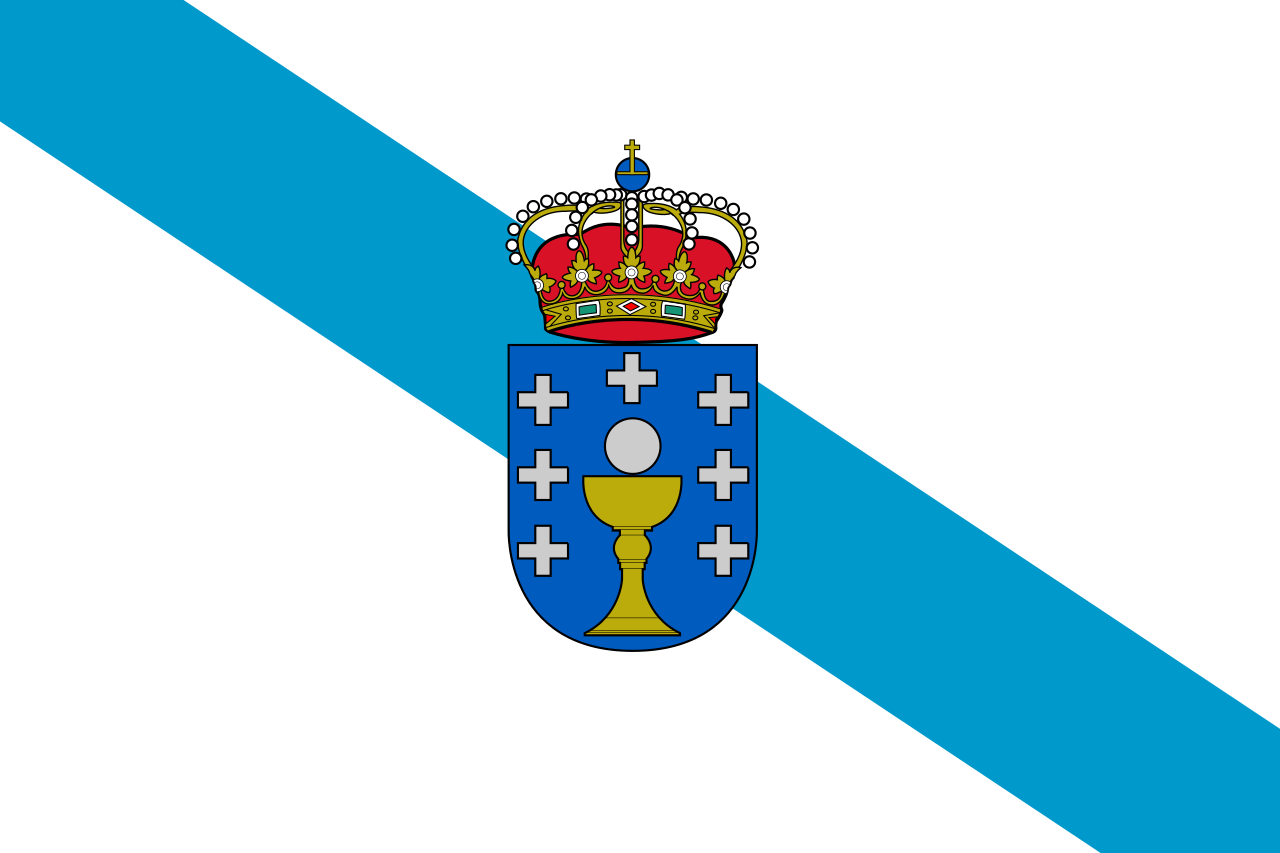 Galicia
Galicia
 Guinea-Bissau
Guinea-Bissau
 Kap Verde
Kap Verde

 Literature
Literature
 Macau Tebiexingzhengqu-MO
Macau Tebiexingzhengqu-MO
 Mosambik
Mosambik
 Portugal
Portugal
 Sao Tome und Principe
Sao Tome und Principe
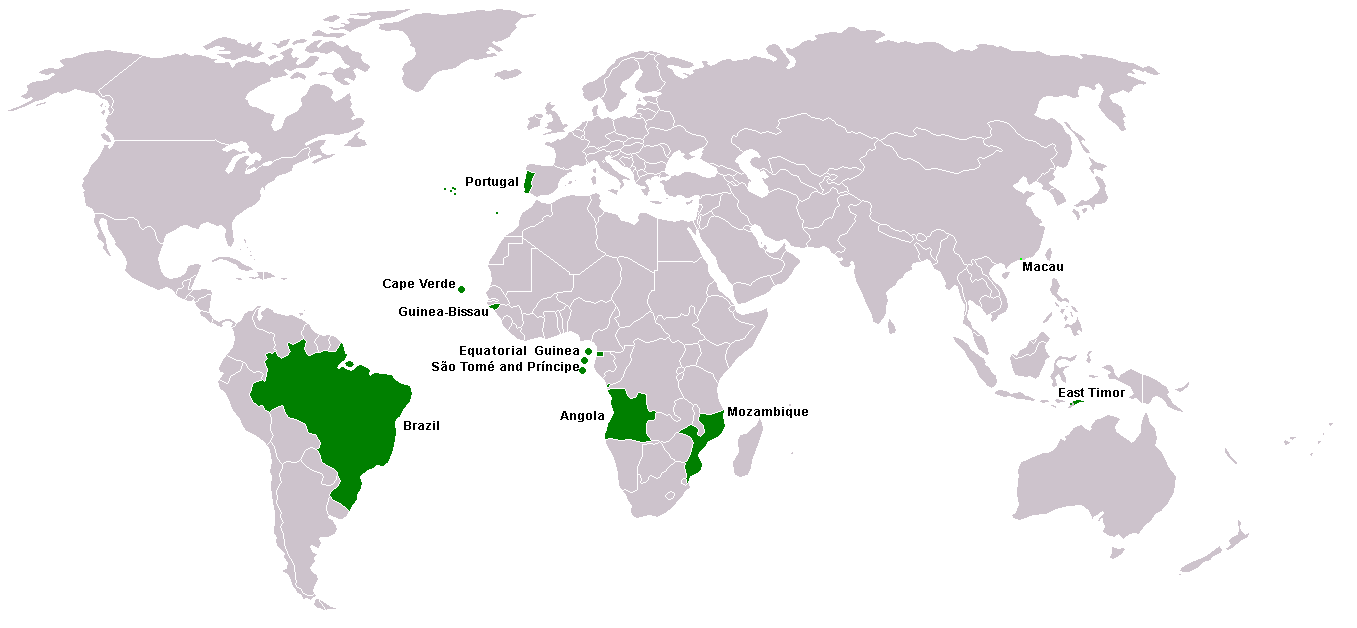
Die portugiesische Sprache (portugiesisch português) ist eine Sprache aus dem romanischen Zweig der indogermanischen Sprachfamilie und bildet mit dem Spanischen (der kastilischen Sprache), Katalanischen und weiteren Sprachen der Iberischen Halbinsel die engere Einheit des Iberoromanischen. Zusammen mit dem Galicischen in Nordwest-Spanien geht sie auf eine gemeinsame Ursprungssprache zurück, das Galicisch-Portugiesische, das sich zwischen Spätantike und Frühmittelalter entwickelte. Nach der Herausbildung der Staatlichkeit Portugals entwickelten sich daraus die beiden heutigen Sprachen. Heute gilt Portugiesisch als Weltsprache.
Es wird von über 240 Millionen Muttersprachlern gesprochen; einschließlich der Zweitsprachler beläuft sich die Zahl der Sprecher auf etwa 270 Millionen.
Die portugiesische Sprache verbreitete sich weltweit im 15. und 16. Jahrhundert, als Portugal sein Kolonialreich aufbaute, das in Teilen bis in das Jahr 1975 überdauerte und das heutige Brasilien sowie Gebiete in Afrika und an den Küsten Asiens umfasste. Als letztes ging Macau aus portugiesischem Besitz an China über. Daraus ergab sich, dass Portugiesisch heute die Amtssprache mehrerer unabhängiger Staaten ist und darüber hinaus von vielen Menschen als Minderheiten- oder Zweitsprache gesprochen wird. Neben dem eigentlichen Portugiesischen gibt es etwa zwanzig Kreolsprachen auf überwiegend portugiesischer Basis. Durch die Auswanderung aus Portugal ist Portugiesisch in den letzten Jahrzehnten in mehreren Staaten Westeuropas und in Nordamerika zu einer wichtigen Minderheitensprache geworden.
葡萄牙语(Português)简称葡语,是罗曼语族的一种语言。葡语以使用国家数量来算是世界排名第七的语言,使用地区包括葡萄牙、巴西、安哥拉、莫桑比克、佛得角、圣多美和普林西比、几内亚比绍、东帝汶和澳门,共计九个国家或地区。超过两亿人口以葡萄牙语为母语。
由于葡萄牙从15世纪和16世纪开始向外进行殖民扩张,建立了包括美洲的巴西、亚洲的澳门的殖民统治,葡萄牙语也成为某些地区最常用的第二外语,如西印度的达曼-第乌联邦区,以及马来西亚的马六甲州。
最古早的葡萄牙语,源于中世纪的加里西亚王国所使用的一支通俗拉丁语变体。今日的母语人口约为2.1亿左右,若包含第二语言使用者则约为2.4亿人,通常被列为母语人口世界第6或第7多的语言[注 1]。葡萄牙语使用区域占地相当广泛,同时主要因为巴西众多的人口,葡萄牙语也是南半球最多人使用的语言,和拉丁美洲仅次于西班牙语的第二大语言。
西班牙作家米格尔·德·塞万提斯曾把葡萄牙语称作“甜蜜的语言”,巴西诗人奥拉沃·比拉克则把葡萄牙语比作“última flor do Lácio, inculta e bela”,意即“拉齐奥最后一朵绚烂的野花”。
葡语界目前唯一的诺贝尔文学奖得主,若泽·萨拉马戈曾说:“世上没有葡萄牙语这种语言,而是有很多语言使用葡语。”
ポルトガル語(ポルトガルご、português [puɾtuˈgeʃ]/[poɾtuˈges], língua portuguesa)は、主にポルトガル及びブラジルとその他の9の国と地域で公用語として使われている言語である。俗ラテン語から発展して形成されたロマンス語の1つで、スペイン語などと共にインド・ヨーロッパ語族イタリック語派に属する。
スペインの作家セルバンテスはポルトガル語を「甘美な言語」と評し、ブラジルの詩人オラーヴォ・ビラックは「ラティウムの最後の、粗野で美しい花」と評している。
ポルトガル語は、大航海時代のポルトガル海上帝国の成長とともにアジア・アフリカ地域に広まった。日本では最初に伝播したヨーロッパの言語であり、古くからの外来語として定着しているいくつかの単語は、ポルトガル語由来である。代表的な例として「パン」があり、戦国時代にキリスト教と共に伝わった。
Portuguese (português or, in full, língua portuguesa) is a Romance language originating in the Iberian Peninsula of Europe. It is the sole official language of Portugal, Angola, Mozambique, Guinea-Bissau, Cape Verde, São Tomé and Príncipe, and Brazil,[6] while having co-official language status in East Timor, Equatorial Guinea, and Macau. A Portuguese-speaking person or nation is referred to as "Lusophone" (lusófono). As the result of expansion during colonial times, a cultural presence of Portuguese and Portuguese creole speakers are also found around the world.[7] Portuguese is part of the Ibero-Romance group that evolved from several dialects of Vulgar Latin in the medieval Kingdom of Galicia and the County of Portugal, and has kept some Celtic phonology and its lexicon.[8][9]
With approximately 215 to 220 million native speakers and 50 million L2 speakers, Portuguese has approximately 270 million total speakers. It is usually listed as the sixth-most spoken language and the third-most spoken European language in the world in terms of native speakers.[10] Being the most widely spoken language in South America[11][12] and all of the Southern Hemisphere,[13] it is also the second-most spoken language, after Spanish, in Latin America, one of the 10 most spoken languages in Africa,[14] and is an official language of the European Union, Mercosur, the Organization of American States, the Economic Community of West African States, the African Union, and the Community of Portuguese Language Countries, an international organization made up of all of the world's officially Lusophone nations. In 1997, a comprehensive academic study ranked Portuguese, specifically the Brazilian variety, as one of the 10 most influential languages in the world.[15][16]
Le portugais (en portugais : português) est une langue appartenant à la branche romane de la famille des langues indo-européennes. Les locuteurs du portugais s'appellent les lusophones.
Le portugais occupe la sixième place des langues les plus parlées dans le monde si l'on tient compte du nombre de personnes dont c'est la langue maternelle. Il est la langue la plus parlée en Amérique du Sud2 et de l'hémisphère sud3, mais seconde en Amérique latine, après l'espagnol (plus du tiers de la population de l'Amérique latine parle le portugais). En Afrique, le portugais se présente comme une importante langue véhiculaire dans les anciennes colonies portugaises. Il représente au total 227,9 millions de locuteurs dont c'est la langue maternelle1 dans le monde et est ainsi la troisième langue européenne la plus parlée en tant que langue maternelle après l'espagnol (406 millions) et l'anglais (335 millions), et représente 4 %4 du PIB mondial. C'est aussi la cinquième langue par le nombre de pays ayant le portugais comme langue officielle4 et la septième pour le nombre de traductions à destination du portugais4
La « langue de Camões » est parlée au Portugal, y compris l'archipel de Madère et celui des Açores, au Brésil, en Angola, au Mozambique, au Cap-Vert, en Guinée-Bissau, en Guinée équatoriale, à Sao Tomé-et-Principe, au Timor oriental, à Goa (Inde), à Daman et Diu (Inde), Malacca en Malaisie et à Macao (Chine). Il appartient à la famille des langues ibéro-romanes et présente de nombreuses similitudes avec le castillan. Au-delà de ses origines fortement latines, 20 % du lexique portugais tire ses racines ailleurs, en particulier de la langue arabe mais aussi notamment de l'occitan. En Galice (Espagne) est parlé le galicien, avec qui il est très étroitement apparenté. Au Brésil, le tupi-guarani en a influencé le vocabulaire.
Les normes de la langue portugaise sont régies par l’Instituto Internacional da Língua Portuguesa et la Comunidade dos Países de Língua Portuguesa.
Des créoles à base portugaise sont parlés au Cap-Vert, en Guinée-Bissau, au Sénégal et à Sao Tomé-et-Principe.
Il portoghese ( português, /puɾtuˈɣeʃ/, /poɾtuˈɡes/ o /poɾtuˈɡeis/ a seconda delle varietà) è una lingua romanza, appartenente al gruppo delle lingue gallo-iberiche; con 228 milioni di locutori madrelingua (L1), è la nona lingua madre più parlata al mondo, la prima dell'emisfero sud e del subcontinente sudamericano (circa metà dei parlanti), ed è inoltre la seconda lingua neolatina più parlata, dietro soltanto spagnolo
La lingua portoghese si diffuse nel mondo nel XV e XVI secolo, cioè nel momento in cui il Portogallo, il primo e più duraturo impero coloniale e commerciale d'Europa, stava estendendosi dal Brasile, nelle Americhe, fino a Macao, in Cina, e in Giappone.[1] Il risultato di questa espansione è che il portoghese, al giorno d'oggi, è la lingua ufficiale di nove Paesi indipendenti ed è largamente parlato o studiato come seconda lingua in molti altri. Esistono ancora circa venti lingue creole basate sul portoghese.
Importante lingua minoritaria in Andorra, Germania, Lussemburgo, Paraguay, Namibia, Svizzera e Sudafrica, esistono, inoltre, comunità parlanti portoghese in molte città e regioni del mondo, come per esempio Parigi in Francia, Tokyo in Giappone, Boston, New Jersey e Miami negli Stati Uniti d'America, nonché le province argentine di Corrientes, Misiones, Entre Ríos e Buenos Aires.
El idioma portugués (português ![]() escuchar (?·i) o língua portuguesa) es una lengua romance flexiva, procedente del galaicoportugués. Tras la independencia de Portugal en 1139 y la posterior reconquista hacia el sur, el idioma se fue expandiendo por los límites del actual Portugal. Asimismo, la lengua se fue difundiendo en el periodo de los descubrimientos por Brasil, seis países en África y otras partes del mundo.2
escuchar (?·i) o língua portuguesa) es una lengua romance flexiva, procedente del galaicoportugués. Tras la independencia de Portugal en 1139 y la posterior reconquista hacia el sur, el idioma se fue expandiendo por los límites del actual Portugal. Asimismo, la lengua se fue difundiendo en el periodo de los descubrimientos por Brasil, seis países en África y otras partes del mundo.2
Con aproximadamente 260 000 000 de hablantes,1 el portugués es la séptima lengua materna más hablada del mundo y la tercera lengua más hablada en usar el alfabeto latino, después del español y el inglés.1 El portugués es también la lengua más hablada del hemisferio sur, con Angola, Mozambique, Timor Oriental y, en primer lugar, Brasil.
Actualmente, es la lengua principal de Portugal, Brasil, Angola, Guinea-Bissau, Mozambique, Cabo Verde, Santo Tomé y Príncipe y Timor Oriental; todos estos países conforman la Comunidad de países de lengua portuguesa. Asimismo posee una pequeña cantidad de hablantes en Macao (aunque se detecta un importante repunte en su uso por las relaciones comerciales entre China y los países lusófonos) y en Goa; también se habla en su forma criollizada, en algunos sectores de la India, Sri Lanka, Malasia e Indonesia. Se habla también por colonias grandes e importantes de países de habla portuguesa establecidas como Andorra, Luxemburgo, Canadá, Estados Unidos, Namibia, Paraguay, Uruguay, Francia, Japón, Colombia, y Venezuela.3 Además de tener un alto número de hablantes en localidades de la frontera hispano-portuguesa como es el caso de Badajoz o de la La Codosera.[cita requerida]
El portugués es conocido como la «lengua de Camões», el autor del poema épico Os Lusíadas y como «la última flor del Lacio», expresión usada en el soneto Língua portuguesa del escritor brasileño Olavo Bilac.4 Por su parte, Miguel de Cervantes consideraba al portugués una lengua «dulce y agradable».5 En marzo de 2006 abrió sus puertas el Museo de la Lengua Portuguesa en São Paulo, la ciudad con mayor número de lusófonos del mundo.6
Португа́льский язы́к (порт. língua portuguesa) — язык романской группы индоевропейской семьи языков, иберо-романская подгруппа. Развился из средневекового галисийско-португальского языка. Письменность — на основе латинского алфавита. Это второй по числу носителей романский язык после близкородственного испанского и один из самых распространённых языков мира (6—8 места). Говорящие на португальском языке объединяются в общий термин лузофоны по имени римской провинции Лузитания, приблизительно соответствовавшей территории современной Португалии, а вся совокупность португалоязычных территорий — лузофония.



 Energy resource
Energy resource
 *Oil and natural gas
*Oil and natural gas

 Financial
Financial
 *Brazil economic data
*Brazil economic data

 Financial
Financial
 *China economic data
*China economic data

 Financial
Financial
 *Germany economic data
*Germany economic data

 Financial
Financial
 *European Union economic data
*European Union economic data

 Financial
Financial
 *France economic data
*France economic data

 Financial
Financial
 *India economic data
*India economic data

 Financial
Financial
 *Indonesia economic data
*Indonesia economic data

 Financial
Financial
 *Italy economic data
*Italy economic data

 Financial
Financial
 *Japan economic data
*Japan economic data

 Financial
Financial
 *Canada economic data
*Canada economic data

 Financial
Financial
 *Russia economic data
*Russia economic data

 Financial
Financial
 *United States economic data
*United States economic data

 Financial
Financial
 *United Kingdom economic data
*United Kingdom economic data

 Economy and trade
Economy and trade




 Military, defense and equipment
Military, defense and equipment


 Automobile
Automobile